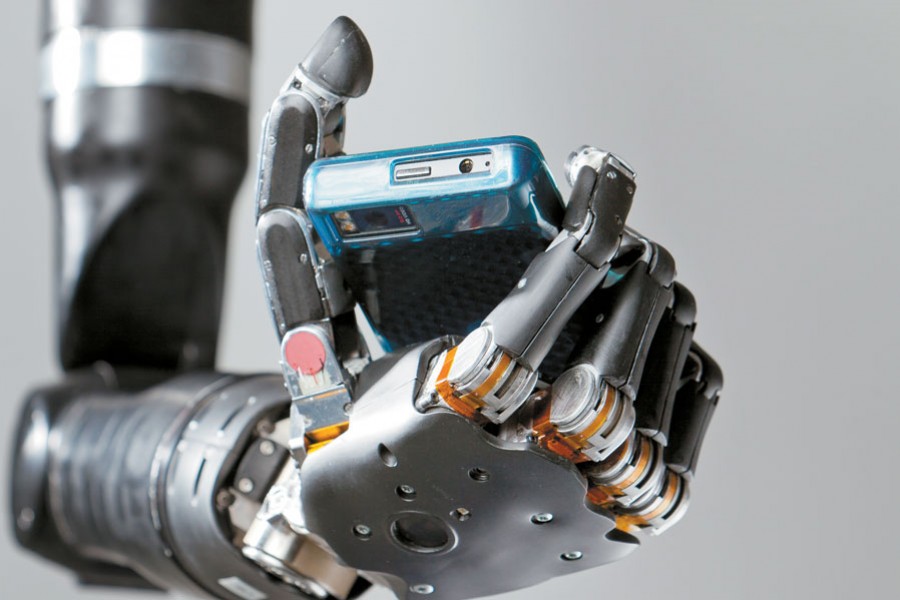"In 2006, the Defense Advanced Research Projects Agency tapped the Applied Physics Laboratory to lead a team of organizations and universities across the country to create a neurally controlled prosthetic limb that would revolutionize the field of prosthetics. This effort was motivated by the fact that most upper extremity amputees still wear a hook, a technology that has been around for a hundred years. It is truly amazing how much progress we have made over the last six years.
"The Modular Prosthetic Limb is a work of art as much as technological marvel. It provides 26 degrees of motion, including independent movement of each finger, in a package that weighs about nine pounds. It has the dexterity of a natural limb and is designed to respond to a user's thought. Its hand can pick up something as fragile as an egg and place it gently on a table.
"We [set out] to help soldiers with limb loss and today are also helping those with spinal cord injury or other neurodegenerative conditions that prevent them from using their natural limbs. As the technology advances, we hope to extend the reach of this technology to help dramatically improve quality of life for our wounded soldiers and all who have lost the use of their limbs.
"We recently began testing at the University of Pittsburgh Medical Center to demonstrate brain control of the MPL by spinal cord injury patients. Later this year, researchers at the California Institute of Technology will begin testing with spinal cord injury patients. Next year we plan to add sensory feedback, giving the prosthetic user the ability to have natural sensation."
Posted in Science+Technology, Voices+Opinion
Tagged applied physics laboratory, michael mcloughlin, prosthetics








